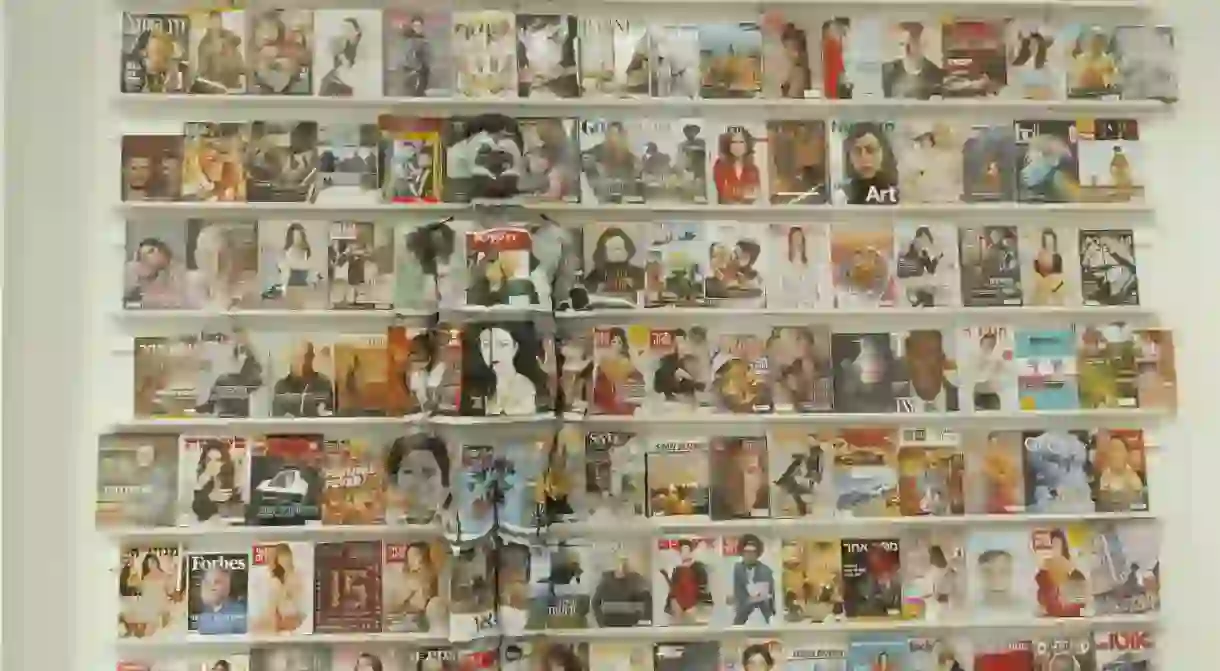Chinese Artist Liu Bolin Literally Gets Lost In Art

Chinese performance artist Liu Bolin, nicknamed ‘invisible Man’ has garnered international acclaim for his captivating camouflage installations, defining the art of disappearance one painting at a time.
What do rock band Bon Jovi, street artist Kenny Scharf and the world famous Louvre Museum all have in common? They’ve all collaborated with visionary Chinese performance artist Liu Bolin.
Nicknamed the ‘Invisible Man’, Bolin uses his own body as a canvas, painting himself into the background scenery, seamlessly blending in like a human chameleon.
A post shared by liubolin (@liubolin) on Jun 11, 2017 at 10:36am PDT
Hailed as one of the leading lights in China’s contemporary art scene, his compelling works have been lauded for their unique blend of performance art, photography and protest.
“Disappearing is not the main point of my work,” Bolin has said. “It’s just the method I use to pass on a message.” Often this message is one of silent protest.
“When my studio in Beijing was torn down by authorities, at that time I had nothing, only my body,” says Bolin. “So I used the disappearance of my body to express a kind of protest against the Chinese government for treating the artistic community poorly. It was my way to attract more people to pay attention to the issue.”
Some of his most notable works include the 2005 “Hiding in the City” series, and the “Invisible Man” collection in 2011. By painting himself into different backgrounds, Bolin invites the viewer to question what is on and beneath the surface.
A post shared by liubolin (@liubolin) on May 18, 2017 at 6:18pm PDT
Far from being a quick disappearing act, it can take Bolin more than 10 hours painting his own body to match the different scenery he uses. “If the background is complicated, I will spend more time on the body,” says Bolin. “For example, I have to prepare two days in advance for more complicated pieces. If the background is simple, it may only take three to four hours.”
In addition to having his work showcased in galleries globally, Bolin has teamed up with other creatives for high profile collaboration projects.
In 2013, since his wife was a fan of rock band Bon Jovi, she persuaded him to design the album cover for the band’s 2013 album What About Now. The band members stood before a giant mural and were themselves covered in paint to give the impression they had disappeared into the background.
In 2016, Bolin also worked on a camouflage project with French artist JR, which saw the two of them ‘disappear’ into the famous pyramid shaped Louvre Museum.
A post shared by liubolin (@liubolin) on Jun 17, 2016 at 12:58am PDT
Given the compelling visual strength of his work, it’s no surprise that Bolin has amassed a strong following on social media, sharing his new works on his Instagram account. “What is trending on the internet has to do with the nature of the times,” he says. “My work goes with the internet age.”
By deconstructing himself and painting himself into the background, Bolin’s work ultimately aims to explore the relationship between people and society, and the ways we can all be made to feel invisible at different times in our lives. “In society, you will feel that you are irrelevant at your lowest point,” says Bolin. “As if you are a transparent person, like you’ve turned invisible.”
For more of Liu Bolin’s work follow him @liubolin or visit liubolinstudio.com













